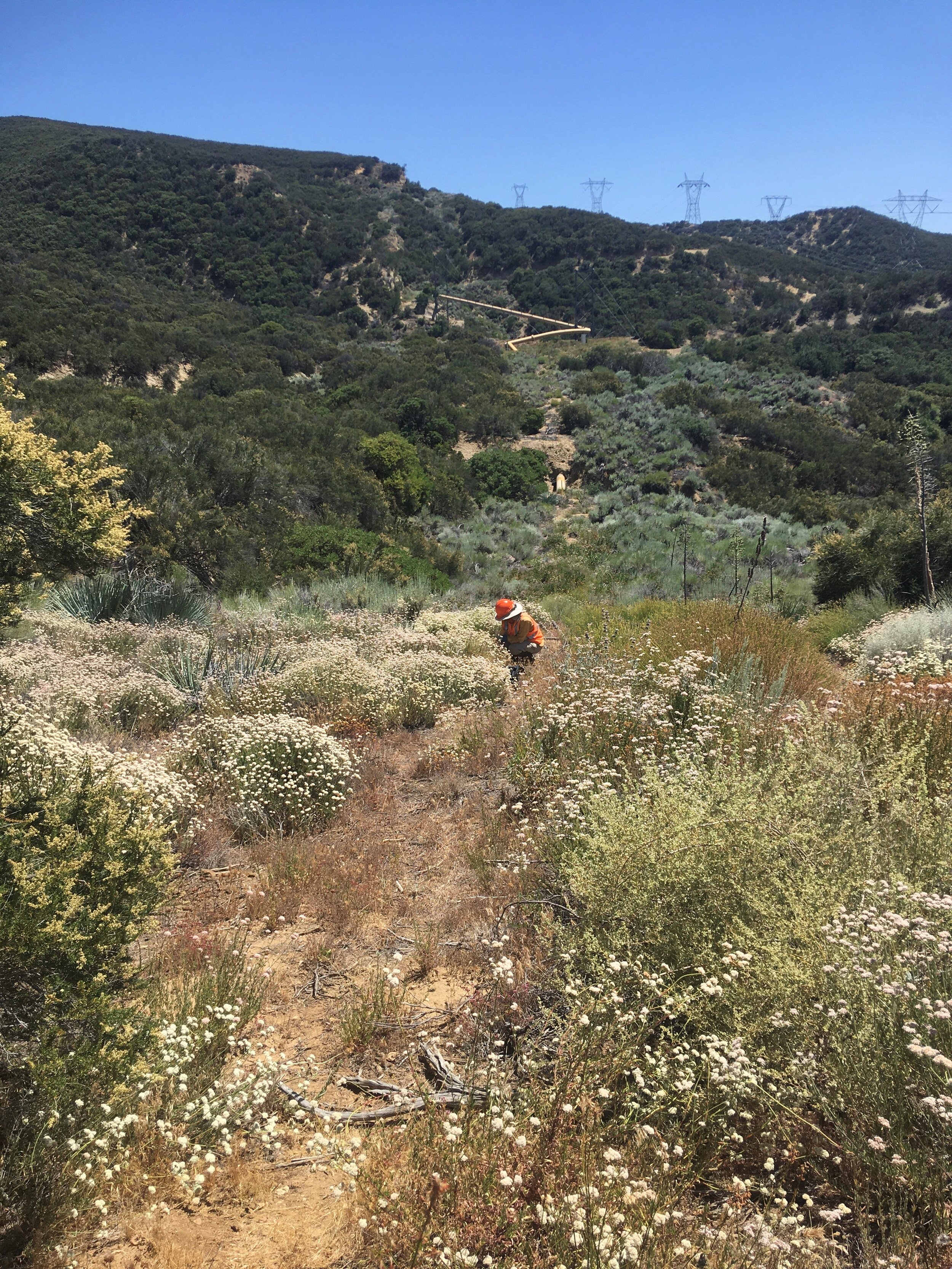Holly Wright, Crew Leader
From March to July 2020, Channel Islands Restoration worked in the Angeles National Forest northeast of Lake Castaic removing non-native weeds to make room for the native chaparral plants of the area. Plants that we removed include yellowstar thistle, tocolate, and tumbleweed (Russian thistle), all of which are non-native, highly invasive, and highly flammable.
In fact, vast areas of yellowstar thistle and tumbleweed contribute to wildfires because they are light enough to easily become airborne and carry a spark or a flame over a wide expanse and spark new fires. The CIR team worked in a collaborative partnership with Pax Environmental to make sure that every task was done right and that every detail was addressed. Amongst a lot of hard work, there were times to share our mutual love for nature and the jobs that we do.
The native chaparral was a joy in which to work. The scent of yerba santa filled the air and the yucca shone in full bloom. The forest geology is awe inspiring. The Liebre Mountains and the Sierra Pelona Mountains are the eastern-most part of the Western Transverse Ranges and are transitional to the San Gabriel Mountains to the east, the Inner Coast Ranges (Santa Susana Mountains, Topa Topa and Pine Mountain) to the west, the Tehachapi Mountains to the north, and the Mojave Desert to the northeast.
Channel Islands Restoration worked in the Angeles National Forest northeast of Lake Castaic removing non-native weeds to make room for the native chaparral plants of the area.
Liebre Gulch is one of the headwaters of the Santa Clara River; and we worked at many sites from which we could look into its depths and down the golden sculptured sandstone walls, decorated with abundant plants living in them. Rancho La Liebre was a 48,800-acre Mexican land grant. Liebre means “hare” in Spanish and the rancho was named as such because of the abundance of hares (erroneously called “jack rabbits”) in the area. In fact, the north and south forks of Liebre Gulch looked to us like they were in the shape of a hare’s ears.
To access the work areas, we would enter from the south or north entrance of the Old Ridge Route. This used to be a highway, first opened in 1915, that linked the Los Angeles Basin and the San Joaquin Valley. At one point along the way, there were inns, hotels, and lookout points.
There are now merely footprints of these structures, with stone steps here and a cobbled wall there. It quickly became unused, but a reminder of that history are the tracks of a Model T Ford cast into the road. The sense of history is palpable as is the impressive engineering of the pipelines that go through the mountains providing vital services to the many millions of people in Los Angeles.
Wildlife was ever present while we worked. We came close to bears, rattlesnakes, whiptails, bee swarms and a mountain lion. We worked hard in hot temperatures with long walks up and down steep canyons as we weeded the restoration areas. The ancient, serene, and vibrant life of the Liebre Mountains and Sierra Pelona Mountains was a wonderful place to work; and the whole crew came away from the Angeles National Forest with this place having a very special place in our hearts.
CIR staff remove non-native weeds to make room for the native chaparral plants of the area.
Donate to CIR today to help fund our habitat restoration and environmental education.





